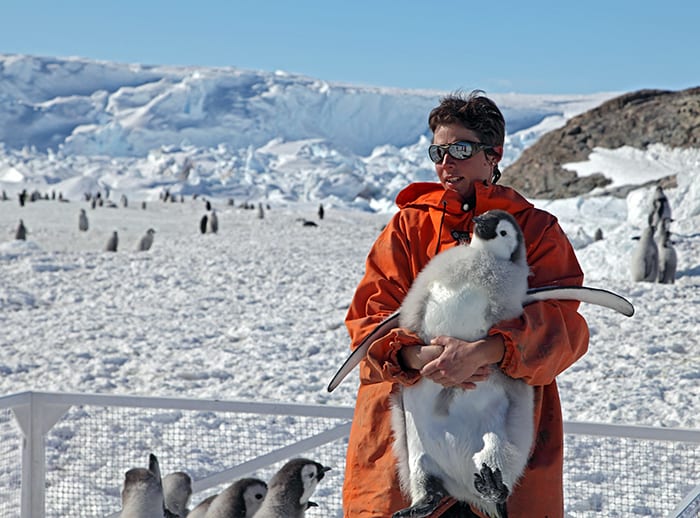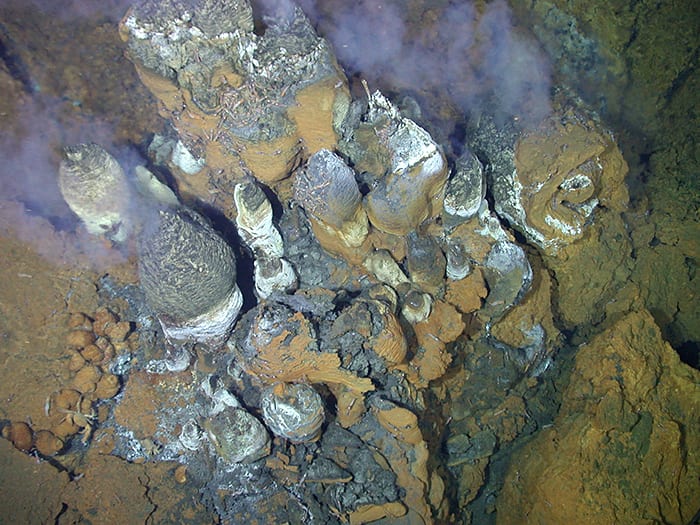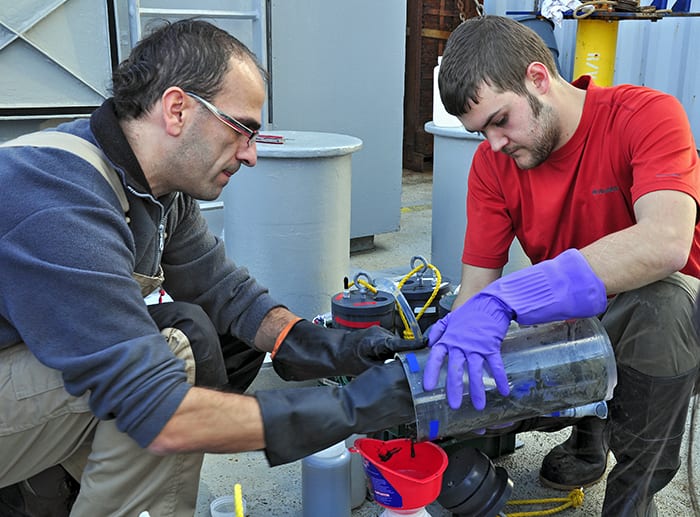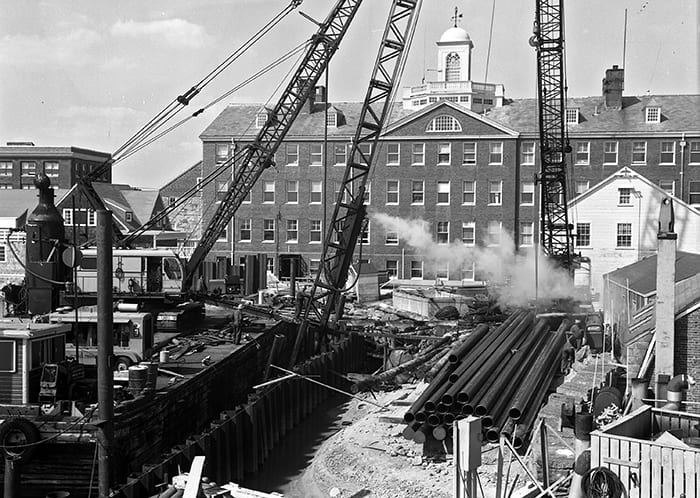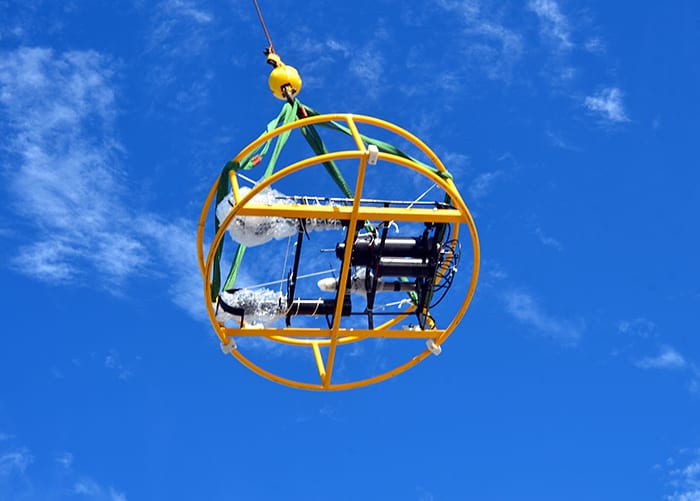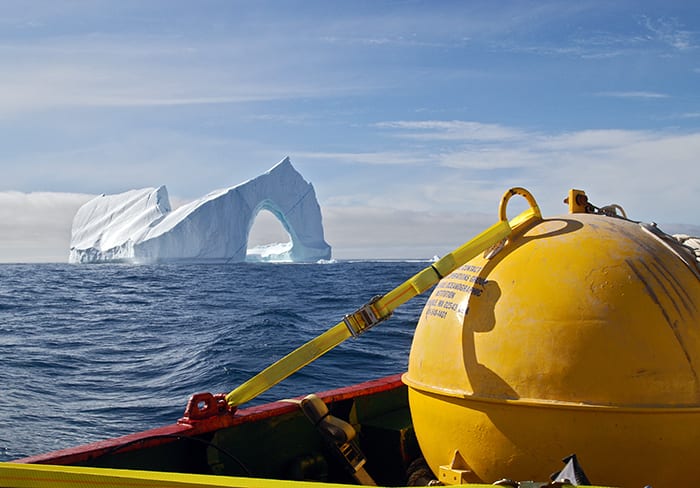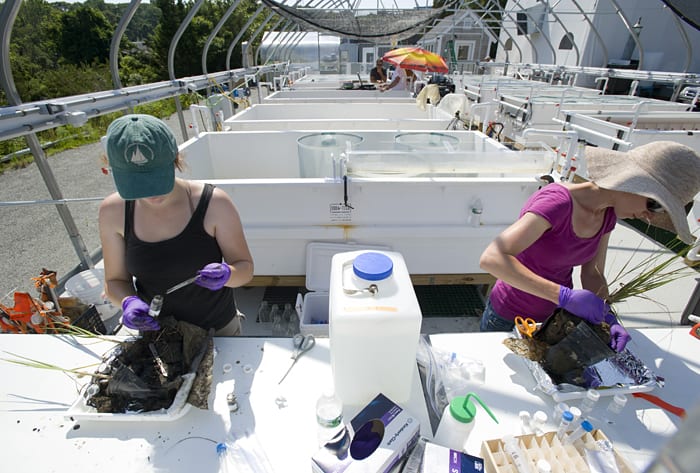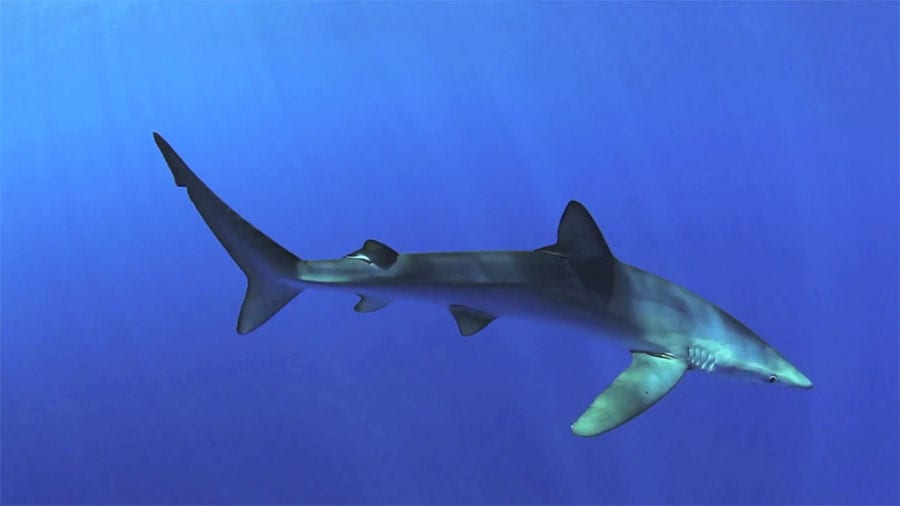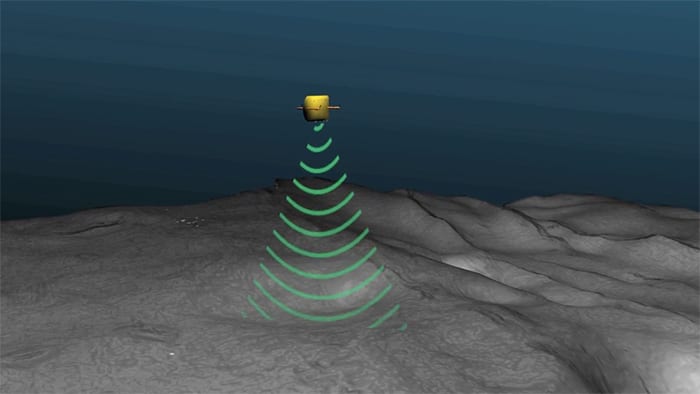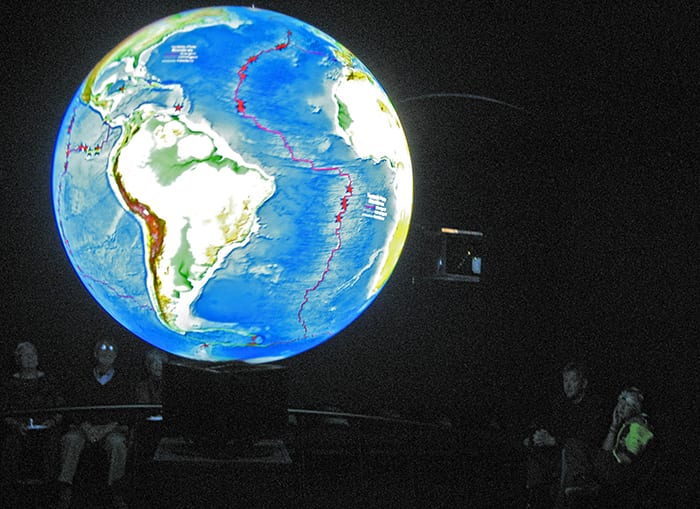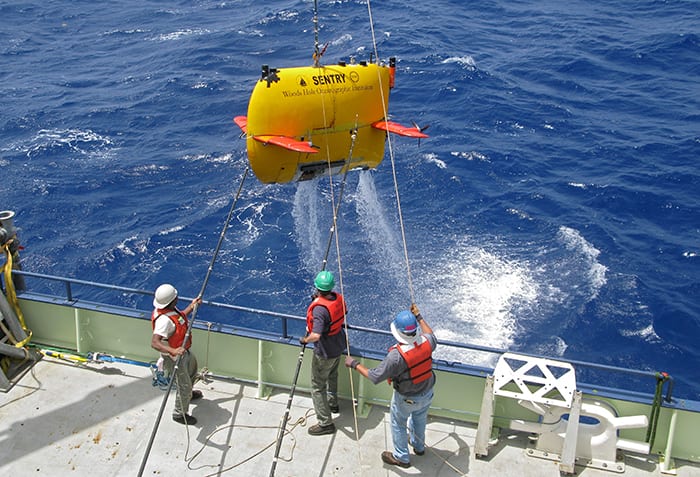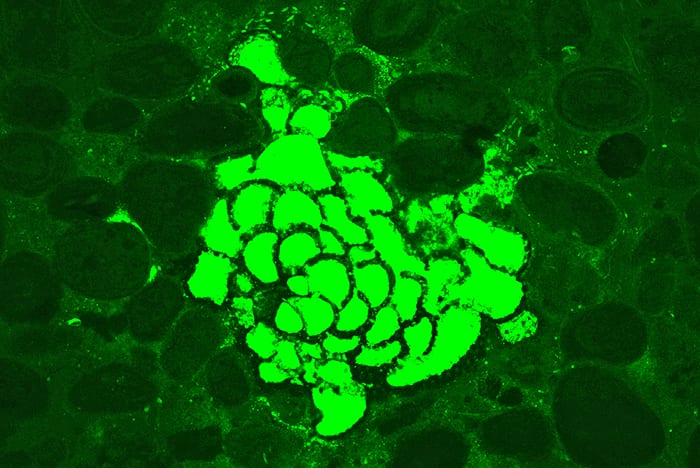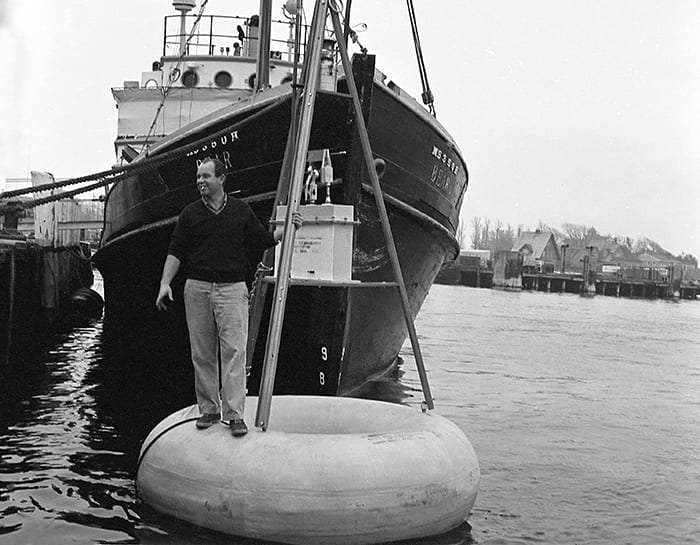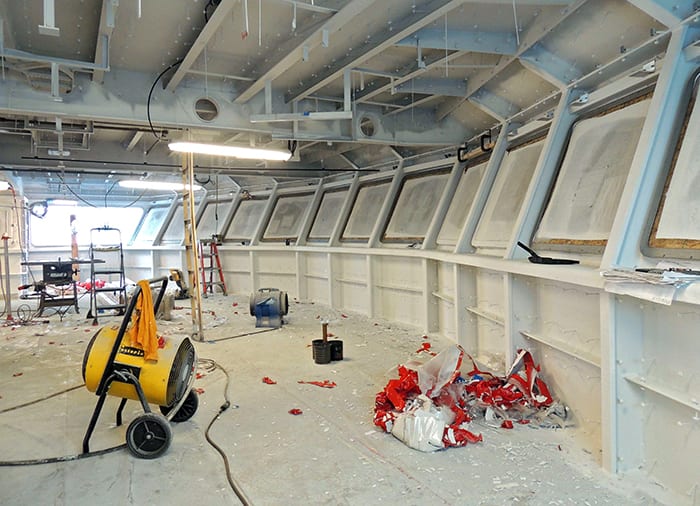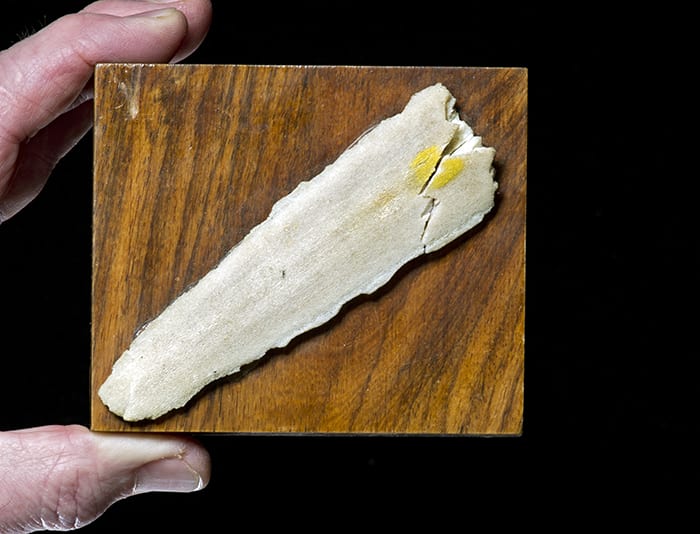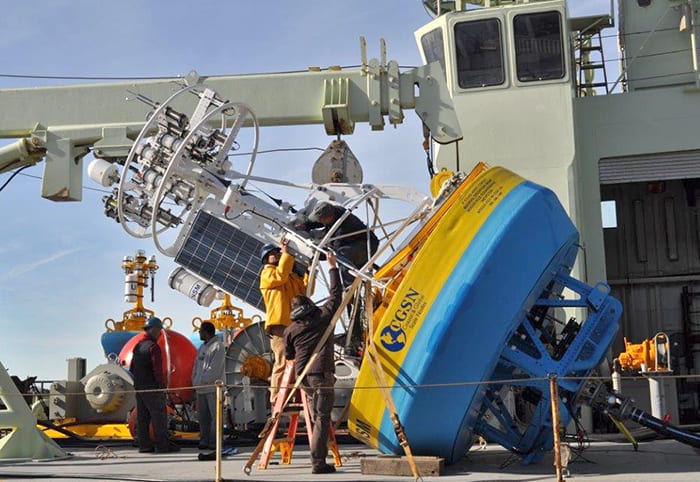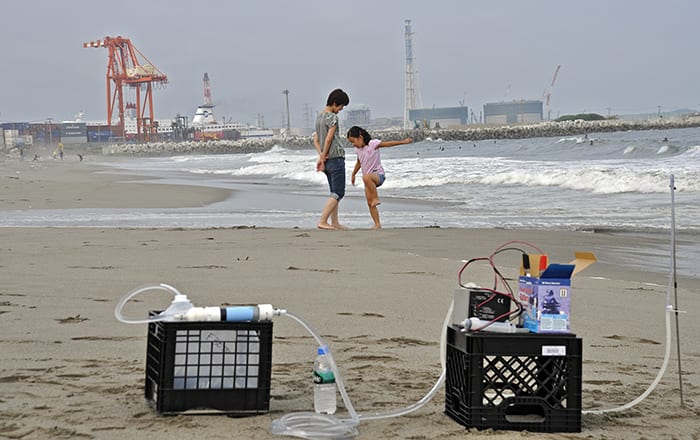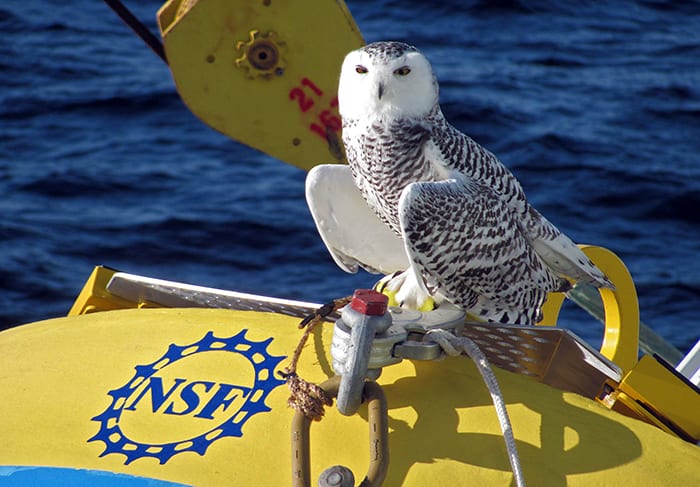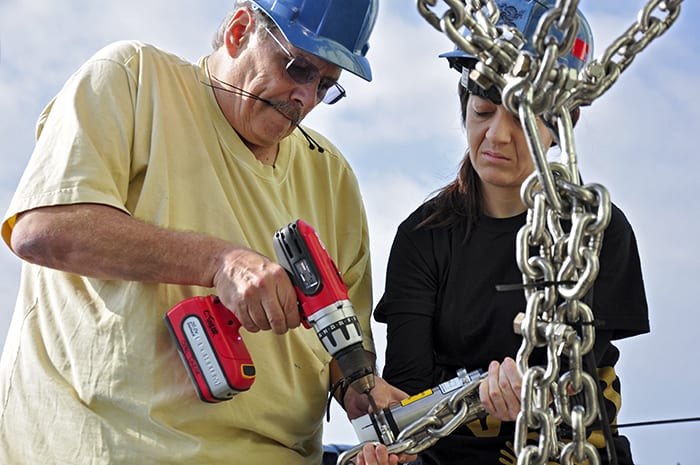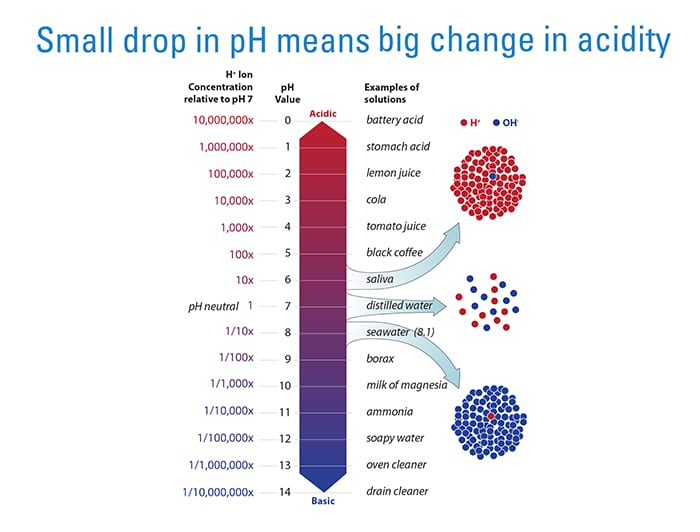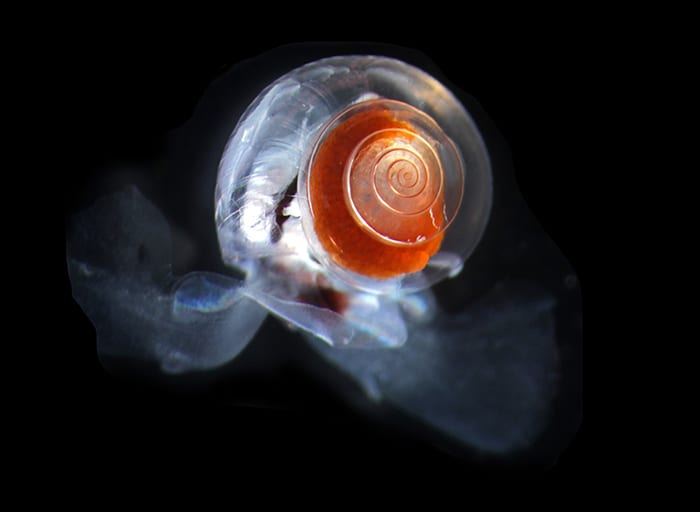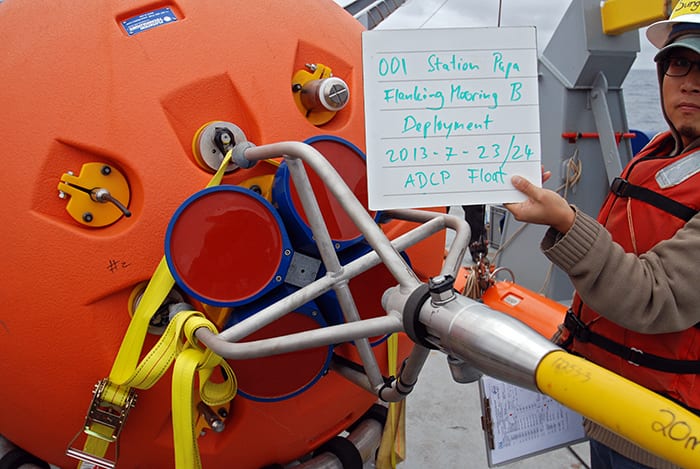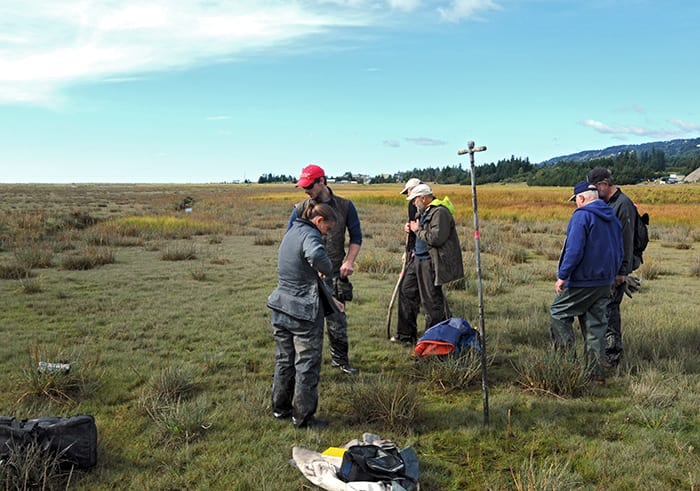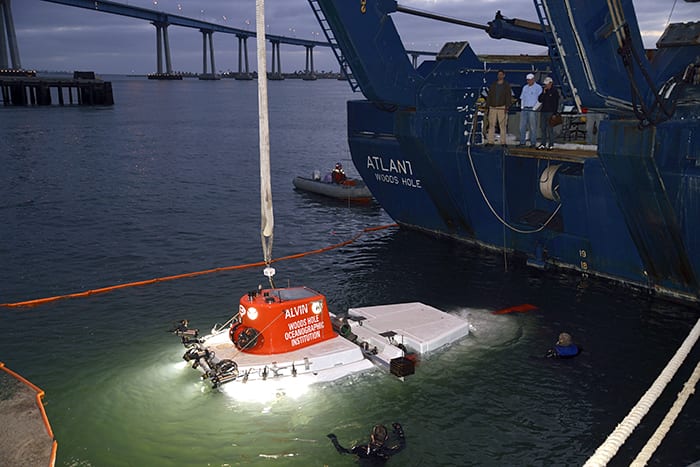Multimedia Items
Help From a Friend
In Terre Adélie, Antarctica, WHOI biologist Stephanie Jenouvrier holds a five-month-old emperor penguin chick in preparation to tag it. Tagging young birds, coupled with a long-term study of this penguin…
Read MoreReady to Dive and Discover
Hydrothermal vents are famous for chimneys that belch hot, mineral-laden water from deep beneath the ocean floor. Not all the fluid at vent sites flows so dramatically, though. Some diffuse…
Read MoreMud Pie, Anyone?
Konstantinos Kormas (left) from the University of Thessaly and Colin Morrison, an undergraduate at the University of Nevada, Reno, collect sediment scooped from the bottom of the Mediterranean Sea by…
Read MorePiering into the Future
“As research equipment gets larger and more sophisticated, the crowding conditions on the exisitng pier will become intolerable,” wrote WHOI Director Paul Fye in 1963. It would be a few…
Read MoreUp in the Air
A video plankton recorder (VPR) is hoisted aboard R/V New Horizon before an August 2012 cruise led by WHOI biologist Gareth Lawson. The VPR is a system that images plankton…
Read MoreDangerous Beauty
An ethereal, distant iceberg can can extend to more than 500 meters below the surface and can actually batter and destroy moorings. Physical oceanographer Fiamma Straneo and engineer Will Ostrom…
Read MoreCarbon Cycle in Action
Summer Student Fellow Jen Reeve (left) and WHOI marine chemist Amanda Spivak collect sediment samples from an experiment in Spivak’s flow-through seawater system (the white tanks behind them). With water…
Read MoreThe Ocean’s Hidden Predators: Revealed
Marine biologist Greg Skomal and engineer Amy Kukulya discuss the importance of sharks in the ecosystem, the threats they are under, and how new technology–the SharkCam, is helping researchers learn…
Read MoreAUV Sentry
The autonomous underwater vehicle (AUV) Sentry is a capable of reaching a depth of 6000 meters and carries a wide range of scientific samplers and sensors . Its shape and…
Read MoreLife, Smoke, and Fire Underwater
Wednesday, December 4, is opening night for Global Viewport to Deep-Sea Vents, a collaborative exhibit created by WHOI and the Ocean Explorium in New Bedford. Visitors will learn about the…
Read MoreBack from Below
During a June 2013 trip from Barbados to Woods Hole, scientists and engineers on board R/V Knorr took a close look at regions of the seafloor along the Mid-Atlantic Ridge…
Read MoreOne Cell, Many Rooms
What look like grapes or bubbles are actually chambers of a single-celled foraminiferan (or foram). Almost 1mm in diameter, the foram is large enough to see with the naked eye.…
Read MoreThe First of Many
Today, WHOI’s mooring and instrument engineers are world-renowned for their expertise in designing and deploying deep-sea mooring arrays. That expertise dates back more than 50 years, when researchers first attempted…
Read MoreBridge to the Future
The inside of the bridge of R/V Neil Armstrong was left to dry after workers sprayed a thermal coating that will prevent condensation buildup on the steel bulkheads and ceiling…
Read MoreIndisputable Evidence
The tip of this swordfish bill was found embedded in a deep-sea mooring in the 1980s. For years, WHOI engineers suspected that fish were damaging mooring components by biting them,…
Read MoreCalm Before Deploy
A coastal surface mooring buoy was fastened to the main deck of R/V Knorr on Tuesday, November 19 in preparation for deployment. The buoy and other instruments on deck are…
Read MoreDay at the Beach
Members of the lab run by WHOI chemist Matt Charette installed equipment on a beach during a recent trip to Northeast Japan. In addition to collecting groundwater samples near the…
Read MoreA Good Omen
“I think it was a good omen, as everything has gone smoothly so far,” is how WHOI senior scientist Al Plueddemann described the appearance of a snowy owl on the…
Read MoreInto the Murk
Researchers Craig Taylor and Maria Pachiadaki bolt a turbidity meter to a chain hanging from a Microbial Sampler-Submersible Incubation Device (MS-SID). They used the MS-SID to collect water and microbes…
Read MoreSmall Changes, Big Impacts
The pH scale, shown here, indicates the concentration of hydrogen ions (H+) in a liquid. Above pH=7, a fluid is alkaline; below 7, it is acidic. Seawater is slightly alkaline,…
Read MoreTiny, Delicate, Vulnerable
Drifting with currents, tiny swimming marine snails called pteropods (“wing-foot”) are an important source of food for fish, whales, and other marine animals. Also called “sea butterflies,” pteropods have shells…
Read MoreAction
In July 2013, researchers aboard the research vessel Melville deployed a set of moorings at Station PAPA in the Northeast Pacific. The instruments, including this acoustic doppler current profiler (ADCP),…
Read MoreCore Knowledge
During a recent trip to Alaska’s Kenai Peninsula, WHOI guest student Chris Maio assisted in the collection of sediment cores from the Beluga Slough salt marsh. The trip was funded…
Read MoreSitting Pretty
During dock trials in San Diego Harbor recently, the rebuilt and upgraded submersible Alvin underwent an incline test while attached to the stern of its support ship, R/V Atlantis. The test…
Read More
